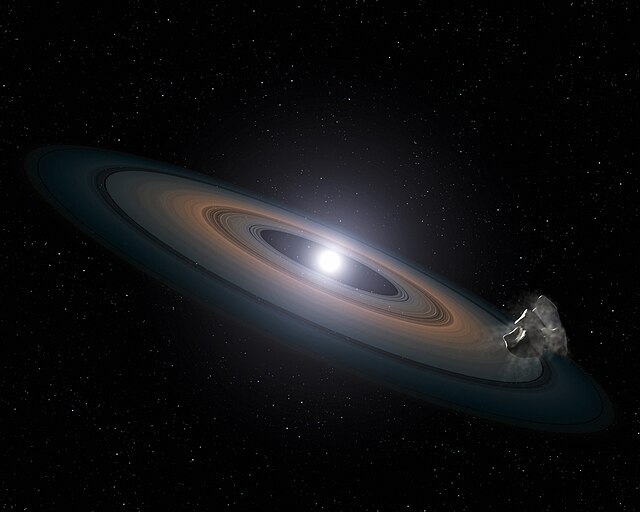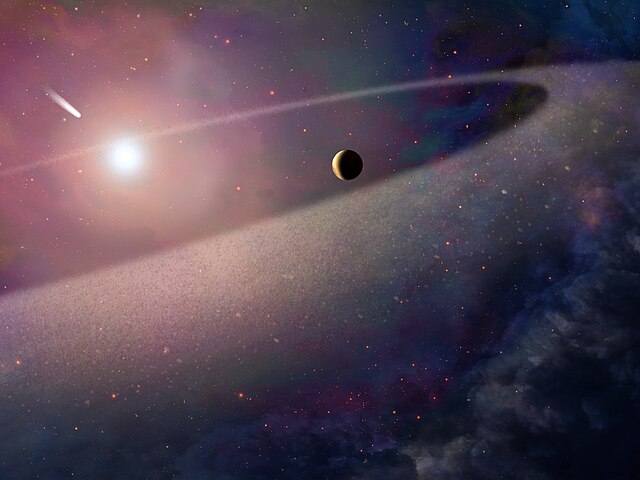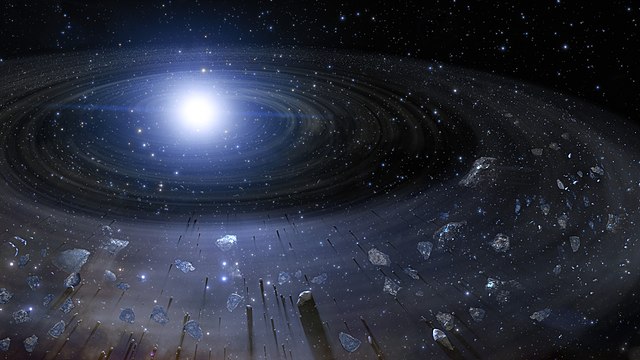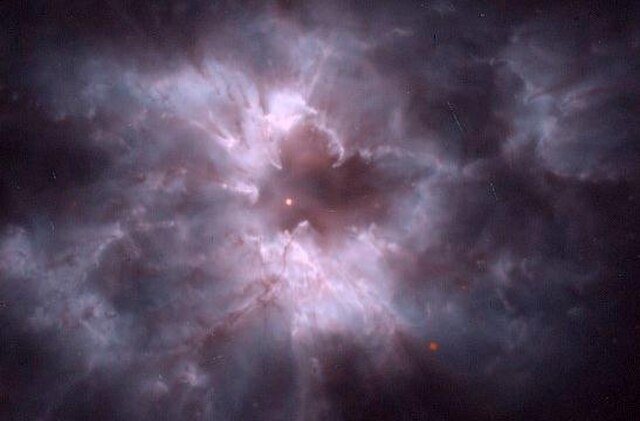A Fermi gas is an idealized model, an ensemble of many non-interacting fermions. Fermions are particles that obey Fermi–Dirac statistics, like electrons, protons, and neutrons, and, in general, particles with half-integer spin. These statistics determine the energy distribution of fermions in a Fermi gas in thermal equilibrium, and is characterized by their number density, temperature, and the set of available energy states. The model is named after the Italian physicist Enrico Fermi.
The free fermions that occupy the lowest energy states form a sphere in reciprocal space. The surface of this sphere is the Fermi surface.
A white dwarf is a stellar core remnant composed mostly of electron-degenerate matter. A white dwarf is very dense: its mass is comparable to the Sun's, while its volume is comparable to Earth's. A white dwarf's low luminosity comes from the emission of residual thermal energy; no fusion takes place in a white dwarf. The nearest known white dwarf is Sirius B, at 8.6 light years, the smaller component of the Sirius binary star. There are currently thought to be eight white dwarfs among the hundred star systems nearest the Sun. The unusual faintness of white dwarfs was first recognized in 1910. The name white dwarf was coined by Willem Luyten in 1922.
Artist's impression of debris around a white dwarf
Comet falling into white dwarf (artist's impression)
Illustration of rocky debris around a white dwarf
Cocoon of a new white dwarf in the centre of NGC 2440





